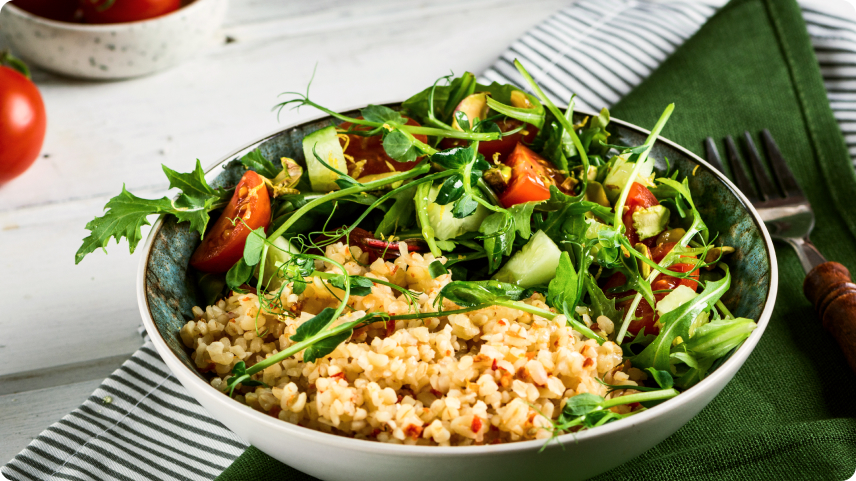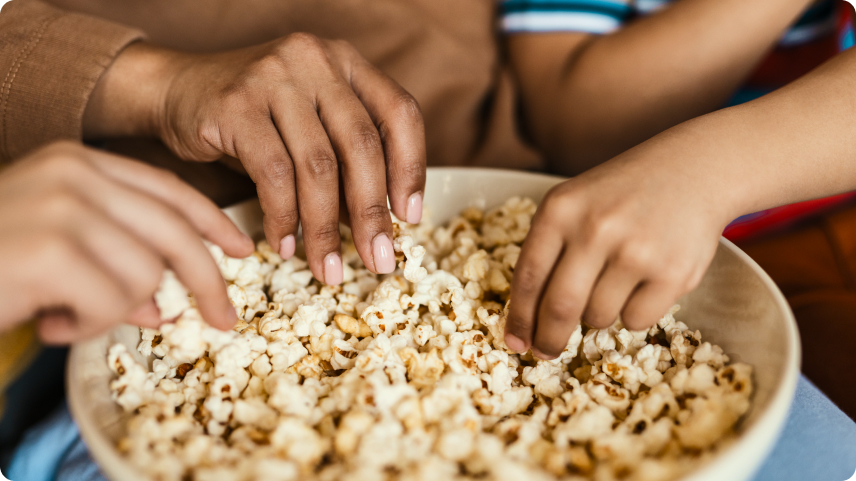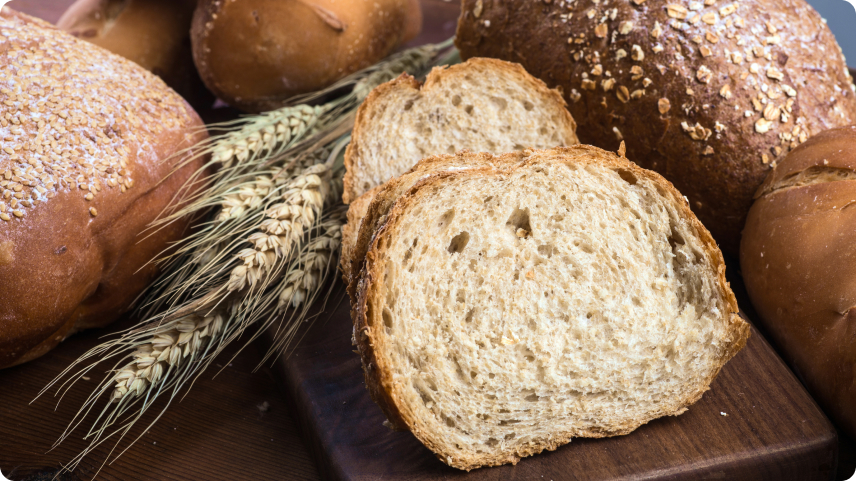Low Carb Grains For Your Diet

Benefits of Grains
Grains are an important source of carbohydrates and overall energy for the human body. They are also beneficial due to their dietary fiber content, which is essential for a healthy gut. Grains can be a good source of amino acids for those following a vegetarian or vegan diet. Whole grains are also associated with better health, including lowering risks of certain conditions.
The good news is that no matter if you’re trying to lower your carb intake or simply want more variety on your plate, you can still enjoy all of these grains. So, what grains are low-carb?
Quinoa
Did you know that quinoa was sacred to the Incas and that they called it the "mother grain"? Quinoa is a very nutritious, healthy, gluten-free, low-carb grain. Quinoa macronutrient contents vary widely depending on the variety and other factors, so it's best to consult the nutritional information on the pack when choosing your quinoa. However, 100 grams of quinoa can generally contain about 9-16 grams of protein, 4-8 grams of fat and 8-14 grams of fiber. It contains all the essential amino acids, and 100 grams of cooked quinoa contains around 21 grams of carbohydrates in total.

Oats
Oats are another low-carbohydrate grain that is versatile and good for you. Oats have many beneficial nutrients, which include soluble fiber, especially oat beta-glucan, which can lower cholesterol. Oats are also rich in protein, vitamin E, and other phenolic compounds associated with better health. For example, one of the phenolic compounds, ferulic acid, has high antioxidant activity to take care of free radicals and oxidative stress.
If you'd like to increase your oat intake, it's better to choose whole grain oats or less processed oats, as they will raise your blood sugar slowly compared to instant oats. A portion (33 grams) of steel-cut oats will provide around 21 grams of carbohydrates alongside plenty of magnesium, potassium, and phosphorus.
Couscous
Couscous is a fluffy, fragrant grain made from durum wheat semolina prepared traditionally. One cup of cooked couscous, which is about 157 grams, provides 176 calories. It has 36 grams of carbohydrates and 2.2 grams of fiber. While it's not as rich in fiber as some of the other options on this list, it is rich in certain micronutrients and has quite a bit of protein. It contains around 6 grams of protein per cup alongside high amounts of selenium.
Selenium is a trace mineral that is key for brain health, immunity, thyroid function, and even reproductive processes. Therefore, couscous can be added to your diet to help you get more selenium when you need it.
Bulgur
Bulgur is an ancient Mediterranean food typically prepared with durum wheat. It requires cleaning, washing, cooking, and drying the grains, and then tempering, branding, and grinding until the final product is formed. Most bulgur comes from wheat, although other types of cereals have been used for its production.
Bulgur is nutrient-dense and is quick to prepare. It is high in B-group vitamins and has high fiber for gut health. In addition, it's a low-carb grain high in protein, calcium, iron, and folic acid. One cup of cooked bulgur, which is about 182 grams, provides 151 calories, almost 6 grams of protein and 34 grams of carbs. Eight grams of these is fiber.

Millet
Millet is a type of grain that originated from Africa, with two main types of millet typically used. These are pearl millet, which originates from sub-Saharan Africa, and finger millet, which likely originated from East Africa. Millet is the sixth highest producing crop worldwide and is very nutritious.
Millets contain up to 12% protein, 2-5% fat and 8-15% fiber by weight. They have a higher content of essential amino acids when compared to typical cereals. In addition, millet contains highly resistant starch and slowly digestible starch, which help lessen glucose spikes and make it an excellent addition to a healthy diet. It is also rich in phytochemicals that help you stay full.
One hundred grams of millet provides around 120 calories, alongside almost 24 grams of carbohydrates, 1.3 grams of which are fiber. In addition, this amount of millet has 3.5 grams of protein.
Popcorn
Can popcorn be a part of a healthy lifestyle? Why, yes. In fact, popcorn is responsible for about 17% of American whole grain consumption.
Popcorn is typically considered a snack food and, therefore, can have the negative connotations that the word "snack" brings. However, popcorn is a highly nutritious grain.
Popcorn is also a great source of polyphenols that can benefit our health. For example, it's a source of ferulic acid, which can help fight oxidative stress and support a healthy blood fat level alongside lower blood pressure.
One ounce of air-popped, unsalted popcorn, which is about 28.35 grams, contains only 22 grams of carbohydrate. Out of these, just over 4 grams come from fiber. In addition, this serving of popcorn will provide only 108 calories and almost 3.5 grams of protein. Now that's a healthy and nutritious snack! Plus, it appears to be more satiating than chips.

Wild rice
Wild rice was recognized as a whole grain by the FDA in 2006 and is a highly nutritious grain. It contains anywhere between 10-18% protein by weight and very little fat. It's also rich in certain vitamins, such as B1, B2, B3 and E. It's a great source of calcium, iron, potassium, zinc, and magnesium, making it a great addition to many people's diets. However, it has lower levels of slowly digestible starch compared to white rice.
One hundred grams of cooked wild rice provides around 21 grams of carbohydrates, making it one of the best low-carb grains. It gives almost two grams of fiber, four grams of protein and only 101 calories. Wild rice can also be an excellent addition for those trying to shed some pounds.
Spelt
Spelt is another low carbohydrate grain. It is a type of ancient wheat, which in recent years has become of interest as a health food. Spelt has more protein than typical bread wheat, and has plenty of beneficial fatty acids, alongside antioxidants.
One hundred grams of cooked spelt provides around 127 calories. The same serving has around 26 grams of carbohydrates, out of which about four are dietary fiber. In addition, spelt has 5.5 grams of protein, making it a filling choice. In addition, it's rich in niacin, zinc, manganese and magnesium, helping you get the necessary amount of critical minerals in your diet. Spelt is often also sold as flour, so you can use it in baking should you want to make lower-carbohydrate treats.
Barley
Barley is a popular whole grain that is used to make many different types of foods, from cereals to breads. It is a great source of dietary fiber, as it contains beta-glucans similar to those found in oats. It’s been reported to have many beneficial effects on health, from potentially lowering levels of cholesterol to gut health and supporting healthy blood sugar levels.
Barley can have up to 25% protein by weight; however, it is lower in lysine than other cereals. It is rich in vitamin B and vitamin E, as well as potassium and phosphorus. It has plenty of phenolic compounds for health, including the ferulic acid mentioned earlier.
One hundred grams of cooked pearled barley has 123 calories and around 28 grams of carbohydrates, four of which are fiber. This serving also contains just over two grams of protein.
Barley can be a great low-carb grain for diabetics.
Rye
Rye is another grain that is typically used to make bread and is a very popular cereal in northern Europe. It provides around 40% of the dietary fiber in countries like Finland and Denmark. Rye grain has comparable amounts of protein when compared with wheat. However, it tends to be higher in dietary fiber. It may be a good cereal to support a healthy microbiome and assist with weight loss.
One hundred grams of raw rye contains about 76 grams of carbohydrates, of which 15 grams come from fibres. In addition, it has about 10 grams of protein. It may seem like a lot; however, rye absorbs water during cooking. Therefore, the actual serving sizes and carbohydrate content of rye will be smaller.

Buckwheat
Did you know that barley isn’t quite a cereal? It is actually a pseudocereal commonly used in colder parts of the world but is especially popular in China and Russia. Buckwheat is a gluten-free, low-carb grain and has beneficial nutrients. It's richer in protein compared to common cereals and contains plenty of amino acids, arginine, lysine and aspartic acid. It's a good source of dietary fiber. In addition, it’s a source of vitamin A, B-group vitamins, and vitamins C and E.
One hundred grams of buckwheat provides about 72 grams of carbohydrates, with 10 of them being dietary fiber. In addition, the same serving offers 13 grams of protein. However, these values are for raw buckwheat, so the same amount of cooked buckwheat will have significantly less carbohydrate.
How to Incorporate Healthy Grains Into Your Diet
You might wonder – how can you include more healthy grains into your daily diet? Luckily, grains are easy to include in many dishes.
Cooking most grains is quite simple. Add them to a pot of water, bring to boil, then simmer until the water is absorbed by the grains. To help you understand how much water to use and how long to cook the grains for, use the instructions on the packaging for the grain you buy. You can easily add some spices to your grains to make them more exciting in terms of taste.
Grains can act as a base for a healthy side to provide your body with the necessary fiber and carbohydrates. Therefore, some boiled grains alongside veggies and a protein source can make a fantastic meal. Alternatively, you can use grains as a base or an addition in salads for a different texture or add them to soups to make them heartier. A grain bowl can make a hearty lunch or even breakfast.
There are many healthy low-carb grains that you can include with ease in your routine. Some of these may sound familiar to you, and some may not. If you plan to introduce these grains into your diet, it's a good idea to try a variety of them to find the ones you like. Remember that to make sustainable changes to your diet, you need to use foods that you enjoy and are likely to stick to during the long term.



